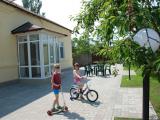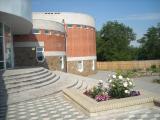Zaporozhskaya region
Zaporozhskaya region occupies the noticeable part of the Pridneprovskaya Lowland and the coast of the Azov Sea. It has the steppe climate which is dry, with little snow in winter, frosty. The main river of the region is the Dnieper River. The region has well developed agriculture and industry. The main crop is sunflower. Among the developed industries are power industry (nuclear and hydro), metallurgy, mechanical engineering, and chemical production. Zaporozhye has always been historically associated with Zaporozhskie Cossacks and Zaporozhskaya Sech activity. The capital of Zaporozhskie Cossacks happened to be the island of Khortytsya which is located in the centre of Zaporozhye city and has been well known since the time of Kievan Rus. After the elimination of Zaporozhskaya Sech by the order of Empress Catherine II, the fortress was built near Khortytsya and initiated the city. Nowadays, Zaporozhye is a large transport centre which has a port on the Dnieper River, railway junction, and the main Moscow-Simferopol motorway which goes via the region. The tourists are attracted by power dam, history of Zaporozhskaya Sech and the island of Khortytsya (educational tourism). The main trend in the tourism development in the region is connected with the Dnieper River and the Azov Sea coast which are the main resources for health tourism, rural tourism, and green tourism.










New reviews